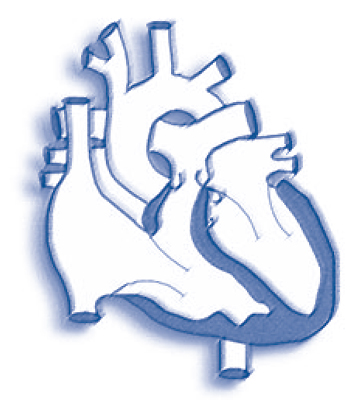|
Normal Heart

The normal heart consists of four chambers. The two smaller chambers are located above the two ventricles are called the atria (receiving chambers). The main function of the two atria is to receive blood from the entire body and lungs, and they push the received blood down to the ventricles. The atrial septum is located on the wall between the right and left atria, the ventricular septum is situated between the right and left ventricles.
The two large lower chambers are called ventricles (pumping chambers). It is a muscular pump and the main function is pumping blood. Thus, the right ventricle pumps blood to the lungs to be loaded with oxygen, and the left ventricle pumps the oxygen rich blood to supply oxygen and important nutrients throughout the body.
Normal Blood Flow Direction

There are four heart valves that control the blood flow through the heart. Deoxygenated blood from the body collects in the right atrium and flows to the right ventricle through the tricuspid valve. Desaturated (blue) blood is pumped through the pulmonary valve into the pulmonary artery. The left pulmonary artery carries blood to the left lung and the right pulmonary artery to the right lung for re-oxygenation.
Oxygenated blood returns from the lungs in the left atrium and flows through the mitral valve into the left ventricle. Blood is then pumped through the aortic valve into the aorta and to the body.
|